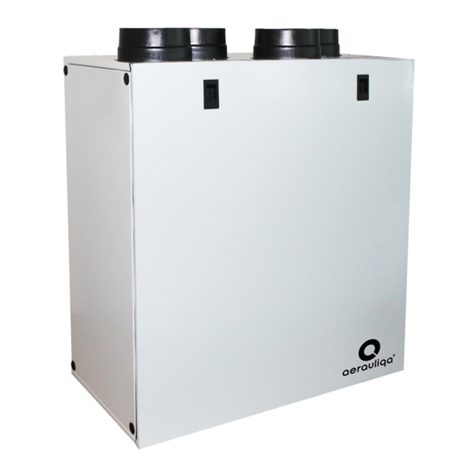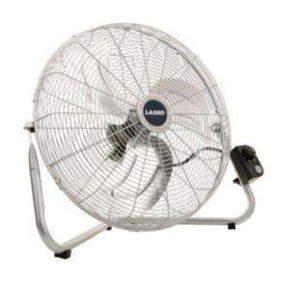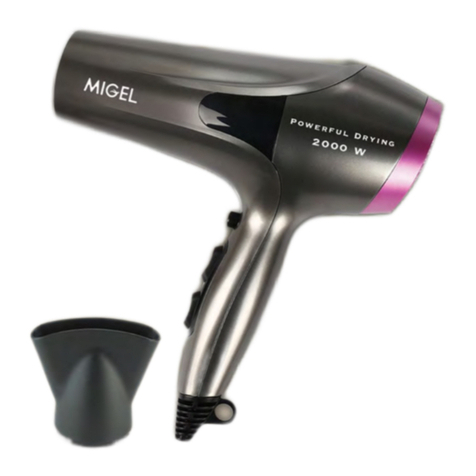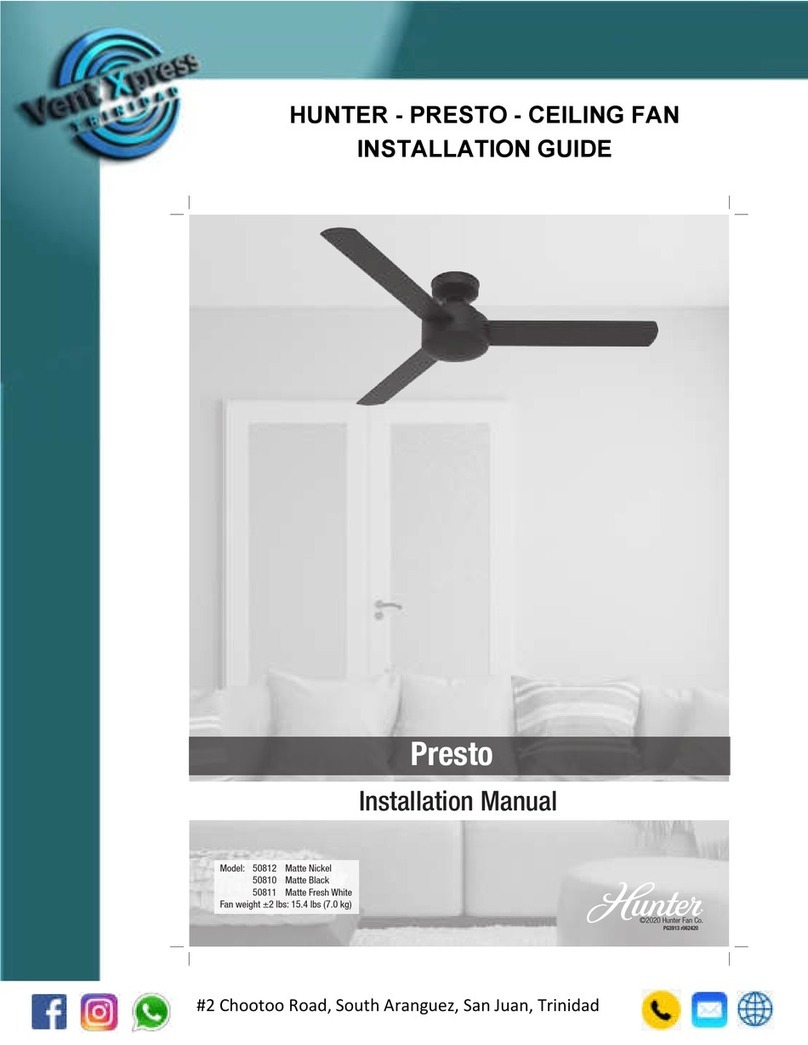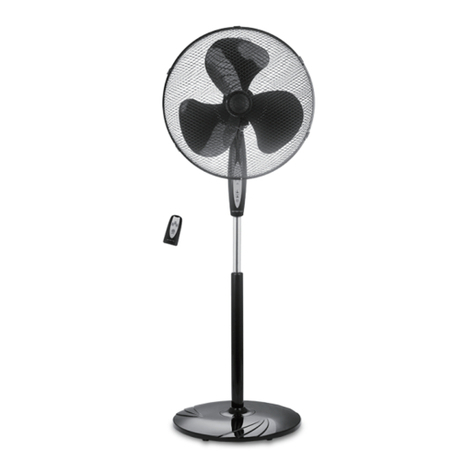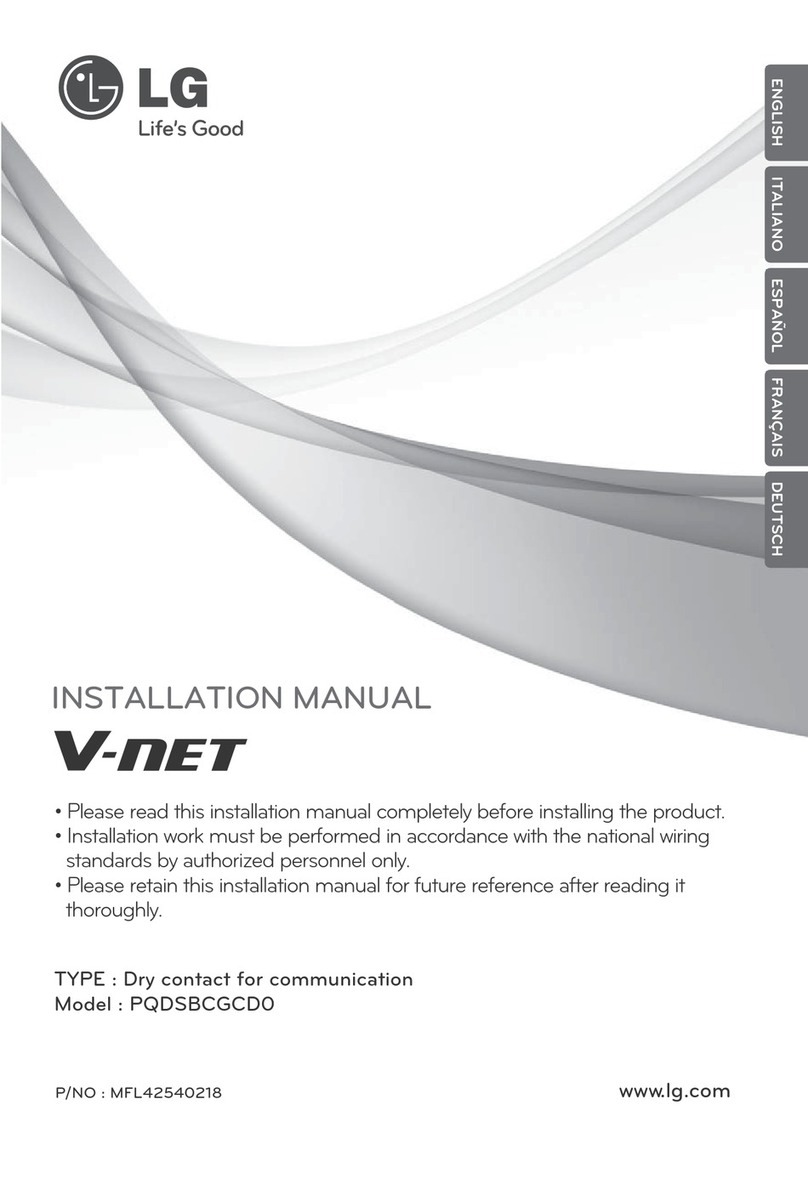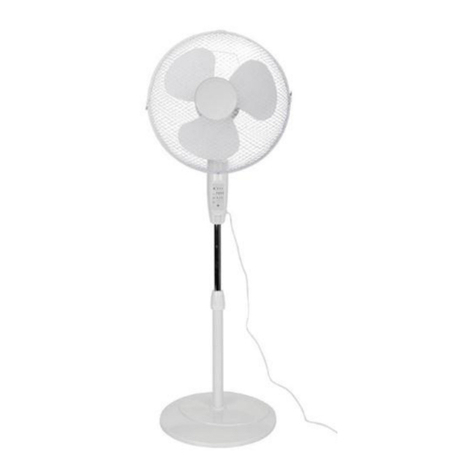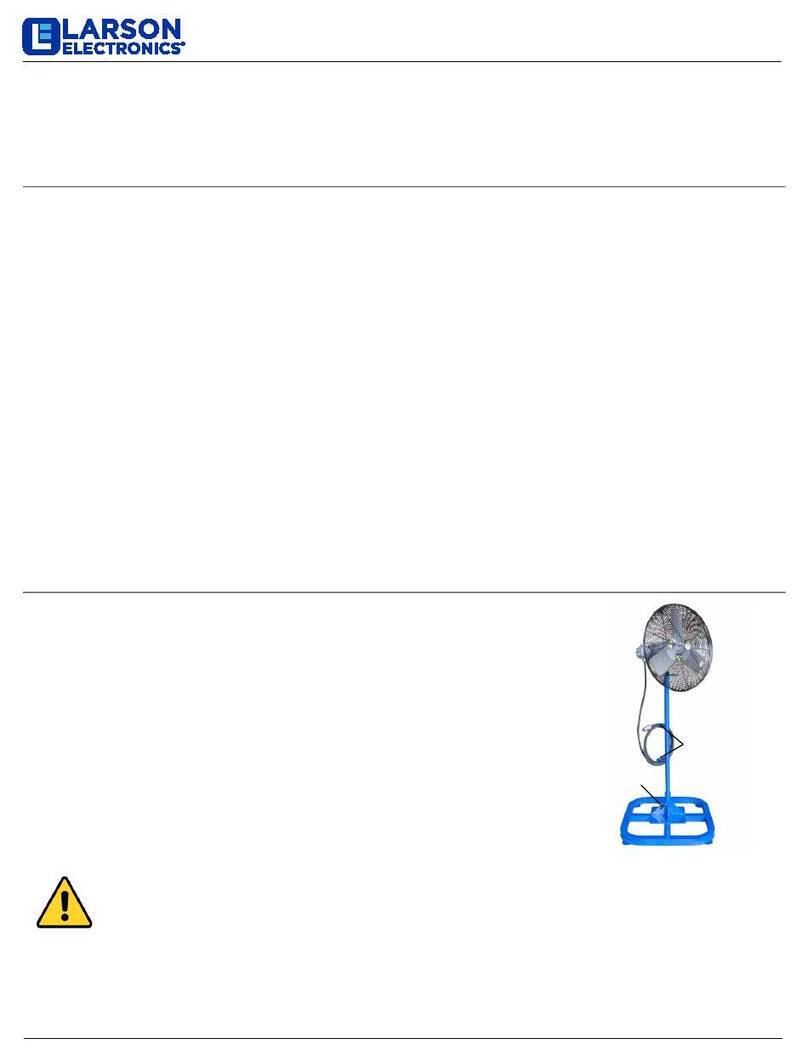EMP TK1 Manual

Rev
Rev By
Date
Description of Change
Approved By
B
ME
4/29/21
Revisions
ECN7265
C
ME
5/19/22
Revisions
ECN7627
9970023081 Rev. C – 05/19/2022 © 2021 EMP, Inc. 1
Installation and Service Manual
TK1 Thermal Systems with
FIC11 or FIL11 Fans
This installation manual is effective for aftermarket
installations of the following part numbers:
Part Number
2020023067
2020023076
2020023071
2020023077
2020023074
2020023078
2020023075
2020023079

Product Overview
The information contained in this manual is updated periodically. While great care is taken in compiling the information contained in this manual, Engineered
Machined Products, Inc. cannot assume liability for losses of any nature arising from any errors and/or omissions.
The information and specifications contained throughout this manual are up to date at the time of publication. Engineered Machined Products, Inc. reserves
the right to change the content of this manual at any time without notice.
© 2021 EMP, Inc. 2
Engineered Machined Products Inc.
2701 North 30th Street
Escanaba, Michigan 49829
Phone: 906-789-7497
www.emp-corp.com
service@emp-corp.com
Product Overview
The EMP TK1 thermal system is designed to provide auxiliary cooling for water-glycol cooled systems.
The EMP TK1 thermal system can also be applied to any water, glycol, or other fluid system with similar hydraulic
properties for the purpose of cooling the auxiliary system.
The fan type, voltage and airflow direction are shown on the fan product label.

Table of Contents
© 2021 EMP, Inc. 3
Table of Contents
Product Overview ..............................................................................................................................................2
Introduction........................................................................................................................................................4
Purpose .........................................................................................................................................................4
Service Technician Responsibilities ...............................................................................................................4
Liability Disclaimer .........................................................................................................................................4
More Information............................................................................................................................................4
Routine Maintenance .....................................................................................................................................4
Technical Help ...............................................................................................................................................4
Warranty ........................................................................................................................................................4
About This Document ........................................................................................................................................5
Warnings, Cautions and Notes.......................................................................................................................5
Definition of Terms.........................................................................................................................................5
Product Safety Warnings ...................................................................................................................................6
Theory of Operation...........................................................................................................................................7
Operation .......................................................................................................................................................7
Power.............................................................................................................................................................7
Heat Rejection ...............................................................................................................................................8
Plumbing Schematics ......................................................................................................................................10
Electronics Cooling – Low Temperature Applications................................................................................... 10
Auxiliary Engine Cooling – High Temperature Applications .......................................................................... 10
Electrical Schematics ......................................................................................................................................10
System Installation ..........................................................................................................................................11
Heat Exchanger and Fan Orientation ........................................................................................................... 11
Harness Management..................................................................................................................................11
Auxiliary Engine Cooling Installation................................................................................................................12
Location .......................................................................................................................................................12
Installation for larger displacement engines with high coolant flow from engine water pump ........................ 12
Installation for smaller displacement engines with lower coolant flow from engine water pump.................... 12
Auxiliary Electronics Cooling Installation.......................................................................................................... 13
Location .......................................................................................................................................................13
Installation....................................................................................................................................................13
Service Parts Replacement .............................................................................................................................14
Connector Greasing .....................................................................................................................................14
FIC11/FIL11 Fan..........................................................................................................................................15
Shroud .........................................................................................................................................................16
Heat Exchanger ...........................................................................................................................................17
Troubleshooting...............................................................................................................................................18
Final Items.......................................................................................................................................................19
Product Warranty Registration Form................................................................................................................ 20

Introduction
© 2021 EMP, Inc. 4
Introduction
Purpose
The purpose of the Service Manual is to present information and procedures required to properly service and
maintain your cooling system.
Service Technician Responsibilities
Ensure that all safety messages and information messages are read and understood before installation,
maintenance, or repairs are performed. It is important to use caution when service work is performed. Knowledge
of impacted systems and their operation are important before the removal or disassembly of any component.
Liability Disclaimer
EMP cannot anticipate every possible circumstance that might involve a potential hazard. The safety messages
in this document, in related manuals, and on the product are therefore not all inclusive. If a tool, procedure, work
method, or operating technique that is not specifically recommended by EMP is used, you must satisfy yourself
that it is safe for you and for others. You should ensure that the product will not be damaged or be made unsafe
by the operation, maintenance, or repair procedures that you choose.
More Information
Documents and software referenced in this manual are available for download from the support section of the
EMP website, https://www.emp-corp.com/support/.
Routine Maintenance
Routine maintenance schedule and procedures are outlined in service bulletin 9910039031.
Technical Help
Contact EMP Technical Service for technical help at +1 (906) 789-7497 or service@emp-corp.com.
Warranty
Mail, Fax, or Email the completed warranty registration form at the end of the document to:
EMP Advanced Development, LLC
2701 North 30th Street
Escanaba, MI, USA 49829
FAX# +1 (906) 789-7825
warranty@emp-corp.com

About This Document
© 2021 EMP, Inc. 5
About This Document
Warnings, Cautions and Notes
Two headings are used in this document to stress your safety and safe operation of the system. They are styled
with a graphic bullet and bold, uppercase text: WARNING and CAUTION. Warnings highlight risks to
personnel — hazards, unsafe conditions and practices that can result in personal injury or death. Cautions
indicate conditions or practices that can cause damage to components, systems, or other equipment.
A third heading, styled as NOTE, calls attention to additional information about components and procedures
discussed in the document.
Definition of Terms
CAN .............. Controller area network.
CAN Control................Fan motor speed controlled by CAN messages.
EMP-Link Control .......Fan motor speed controlled by EMP-Link messages (for use with EMP system
controllers).
FIC11 ............ 11” fan with CAN communication.
FIL11............. 11” fan with EMP-Link communication.
On/Off Control..........Fan runs when ignition enable signal is present.
PWM Control ............Fan motor speed controlled by PWM signal input.
Temperature Input Control.............Fan controller monitors thermistor input and controls fan motor to a
corresponding calibrated speed.
!
!

Product Safety Warnings
© 2021 EMP, Inc. 6
Product Safety Warnings
WARNING: EMP cannot anticipate every possible circumstance that might involve a potential
hazard. The safety messages in this document, in related manuals, and on the product are
therefore not all inclusive. If a tool, procedure, work method, or operating technique that is not
specifically recommended by EMP is used, you must satisfy yourself that it is safe for you and for
others. You should ensure that the product will not be damaged or be made unsafe by the
operation, maintenance, or repair procedures that you choose.
WARNING: Ensure that all safety messages and information messages are read and
understood before installation, maintenance, or repairs are performed. It is important to use
caution when service work is performed. Knowledge of impacted systems and their operation are
important before the removal or disassembly of any component.
WARNING: Make sure the equipment cannot move before doing any work or diagnostic
procedures on the EMP component, system, or vehicle.
WARNING: When working near electric components, ensure they cannot activate
unexpectedly. Remove power or utilize lock out switches.
WARNING: Use extreme caution when working on systems under pressure (i.e. coolant,
hydraulic fluids, air, fire suppression, etc.).
WARNING: Make sure the work area is ventilated and well lit.
WARNING: Make sure charged fire extinguishers are in the work area.
WARNING: Reinstall all safety guards, shields and covers.
WARNING: Make sure all tools, parts and service equipment are removed from the work
area.
WARNING: Ensure that all system power and ground connection points are torqued to EMP
and/or OEM specifications to prevent system damage. Failure to follow specified torque
requirements can result in loose connections which can damage electronic components and will
void EMP warranty.
!
!
!
!
!
!
!
!
!
!

Theory of Operation
© 2021 EMP, Inc. 7
Theory of Operation
NOTE: For exact controller parameters, Contact EMP Technical Service with the serial number of
the component.
Operation
FIC11 systems support on/off, CAN and temperature input control.
FIL11 systems support on/off, PWM and EMP-Link control.
For more information about interfacing with the fan, refer to Service and Installation Manual 11 Inch Axial Fan
Assembly, EMP document 9980036021.
Power
1. Ignition enable signal required
•For 12V system, 9–16 volts.
•For 24V system, 18–32 volts.
•Maximum 5 amps.
•5-amp fuse should be installed on ignition enable line.
2. System (fan) power must be fused at 30 amps.

Theory of Operation
© 2021 EMP, Inc. 8
Heat Rejection
NOTE: Heat rejection curves are for systems with EMP fans.
Inlet Temperature Differential (ITD) = (fluid temperature into cooler - air temperature into cooler)
The performance of the system can vary ±10%.
No external system restriction or airflow recirculation represented in test data. The system must be validated in
the application to determine the affect additional system restriction and airflow recirculation have on
performance.
4000 rpm is the maximum speed setting on 12V TK1.
4600 rpm is the maximum speed setting on 24V TK1.
Depending on ambient conditions and duty cycles, cooler performance exceeding 4600 rpm can be achieved
with 24V systems. Contact EMP to discuss these special cases.
The test results are for fans in puller configuration. Contact EMP for pusher configuration data.
11” Fan Speed
Air Flow Rate (SCFM)
4000
1000
4500
1250
5000
1500
5500
1750
TK1 Heat Exchanger - Corrected Coolant Side Heat Rejection
40F ITD, 50/50 Water/Glycol
EMP Calorimeter - 3/9/2007
0
2
4
6
8
10
12
0200 400 600 800 1000 1200 1400 1600 1800 2000
Air Flow Rate (SCFM)
Heat Rejection (kW)
19.9 GPM
15.0 GPM
10.0 GPM
5.2 GPM

Theory of Operation
© 2021 EMP, Inc. 9
TK1 Heat Exchanger - Coolant Side Restriction
140F Inlet Coolant Temp, 50/50 Water/Glycol
EMP Calorimeter - 3/9/2007
0
0.5
1
1.5
2
2.5
0 5 10 15 20 25
Coolant Flow Rate (GPM)
Coolant Side Restriction (psi)
Coolant Side Restriction

Plumbing/Electrical Schematics
© 2021 EMP, Inc. 10
Plumbing Schematics
Electronics Cooling – Low
Temperature Applications
NOTE: Thermistor for low temperature
applications is to be located on the outlet
side of the TK1.
NOTE: A vented surge tank suitable for use
in electronics cooling circuits is available
from EMP, part number 1370023082.
text
TK1
Thermistor
Inlet
Outlet
Water Pump
Electronics
Surge
Tank
Air Vent
Vented
Vented Auxiliary System Schematic
text
TK1
Thermistor
Inlet
Outlet
Water Pump
Electronics
Degas
bottle
Non-Vented Auxiliary System Schematic
Auxiliary Engine Cooling – High
Temperature Applications
NOTE: Thermistor for high temperature
applications is to be located on the inlet side
of the TK1.
text
Engine
Radiator Thermostat
Engine
Pump
TK1
Thermistor
Inlet Outlet
Water pump
(Optional)
Auxiliary Engine Cooling – High Displacement Engine
Schematic
NOTE: Secondary cooling schematic shows
system plumbed into the vehicle cooling
system in parallel to the main cooling system
for large displacement engines.
text
Engine
Radiator Thermostat
Engine
Pump
TK1
Thermistor
Inlet
Outlet
Water pump
(Required)
Auxiliary Engine Cooling – Low Displacement Engine
Schematic
NOTE: Secondary cooling schematic shows
system plumbed into the vehicle cooling
system in parallel to the upper radiator hose
for low displacement engines.
Electrical Schematics
Refer to the application examples in Service and Installation Manual 11 Inch Axial Fan Assembly for electrical
wiring schematics.

System Installation
© 2021 EMP, Inc. 11
System Installation
Heat Exchanger and Fan Orientation
The hose barbs on the end of the tanks cannot be lower than the rest of the tank.
If the fan will be exposed to water spray, the grommet where the harness enters the motor cavity should be
pointed down to avoid pooling of water at the grommet. If necessary, remove and reinstall fan oriented with the
fan harness exiting the fan motor facing down as installed. Torque the four M6-1 x 16 fan mounting bolts to spec.
Proper Orientation
Improper Orientation
Harness Management
Harnesses should be supported every 12 to 18 inches.
Support connectors to avoid strain and side loads.
Use drip loops to reduce water contact with connectors.

Auxiliary Engine Cooling Installation
© 2021 EMP, Inc. 12
Auxiliary Engine Cooling Installation
NOTE: Additional fittings, pipes, and/or hoses will be required to complete the installation of the
cooling system.
Location
•Choose a rigid spot on the vehicle frame rail or body that is exposed to ambient air (cleaner/cooler is better)
and as close as possible to the radiator pipes to minimize the length of the coolant hoses.
•Consider the routing of the hoses and power cables when selecting the location.
CAUTION: Any hosing, tubing, battery cable, wiring or electrical harness must not rub on a
sharp edge.
CAUTION: Any hosing, tubing, battery cable, wiring or electrical harness must not rub or
make contact with a hot surface. There should be 5” minimum clearance from the exhaust.
NOTE: Any hosing, tubing, battery cable, wiring or electrical harness should be supported at least
every 18" to 20".
Installation for larger displacement
engines with high coolant flow from
engine water pump
NOTE: Do not allow the port and hose routing
to be the highest point in the cooling system.
The upper radiator pipe is usually close to the
highest point in the engine cooling system. A
high placement of the port can allow air to
enter the auxiliary system if the cooling
system level is not full.
Route supply plumbing from the upper radiator pipe,
between the thermostat and main radiator to the TK1
cooler. Route return plumbing from the TK1 cooler
to the lower radiator pipe, between the main radiator
and main engine water pump.
Keep the following in mind when selecting port
locations for the upper and lower radiator pipe:
•Account for routing of 1” heater hose covered
with convoluted tubing running to the ports.
•Orient the new ports so that the hose routings
will be out of the way of other components on the
engine.
Installation for smaller displacement
engines with lower coolant flow from
engine water pump
NOTE: Do not allow the port and hose routing
to be the highest point in the cooling system.
The upper radiator pipe is usually close to the
highest point in the engine cooling system. A
high placement of the port can allow air to
enter the auxiliary system if the cooling
system level is not full.
Route supply and return plumbing between the
upper radiator pipe and the TK1 cooler. The supply
plumbing should connect to the upper radiator pipe
after it exits the thermostat on the engine and before
it goes into the main radiator. The return plumbing
should connect to the upper radiator pipe between
the supply connection and the main radiator.
•The upper radiator hose must be cut to allow
installation of the supply and return lines.
!
!

Auxiliary Electronics Cooling Installation
© 2021 EMP, Inc. 13
Auxiliary Electronics Cooling Installation
NOTE: Additional fittings, pipes, and/or hoses will be required to complete the installation of the
cooling system.
Location
•Choose a rigid spot on the vehicle frame rail or body that is exposed to ambient air (cleaner/cooler is better)
and as close as possible to the electronics reservoir to minimize the length of the coolant hoses.
•Consider the routing of the hoses and power cables when selecting the location.
Installation
CAUTION: Any hosing, tubing, battery cable, wiring or electrical harness must not rub on a
sharp edge.
CAUTION: Any hosing, tubing, battery cable, wiring or electrical harness must not rub or
make contact with a hot surface. There should be 5” minimum clearance from the exhaust.
NOTE: Any hosing, tubing, battery cable, wiring or electrical harness should be supported at least
every 18" to 20".
Route (2) 1” heater hose lengths wrapped in 1¼ split conduit from the TK1 to the ports on the electronics
reservoir.
NOTE: When utilizing a water pump, it must be installed on the TK1 outlet side.
!
!

Service Parts Replacement
© 2021 EMP, Inc. 14
Service Parts Replacement
NOTE: Reference the service drawings for important notes, specifications, component locations,
orientations, and torque specifications. Service drawings for this manual can be obtained at
https://www.emp-corp.com/support/documents/ by searching for the system part number.
Connector Greasing
NOTE: See Service Bulletin Approved Grease, document 9910039075, for a list of dielectric grease
products that have been approved for use in maintenance and service.
NOTE: Only use clean dielectric grease.
1. Apply dielectric grease to each harness side electrical connector. See the table below for specified grease
amounts.
2. Remove any excess grease after proper connections have been made, if needed.
Reference Quantities
Grease
Description
1.25 g
7-pin Fan Connectors
None
10-pin Fan Connectors

Service Parts Replacement
© 2021 EMP, Inc. 15
FIC11/FIL11 Fan
WARNING: To avoid serious personal
injury, possible death, or damage to the
vehicle, disconnect the main negative battery
terminal and/or switch off the battery
disconnect switch first before removing or
installing any electrical components. When
working on or near the electrical fans, ensure
battery power is off or lockout vehicle ignition
so the system cannot activate unexpectedly.
NOTE: Take note of any harness fastener
locations and orientations that are attached to
the fan, prior to removal (edge clip mount zip
ties, fir tree mount zip ties, p-clips, j-clips,
connector mounting clips, etc.).
Removal
1. Cut/remove any zip ties that are securing the
fan.
2. Disconnect the fan connector from vehicle
connector.
NOTE: To avoid damaging the wires and/or
pin connections, do not pull back using the
wire harness to disconnect the connection.
Wiggling the connector body will help in
freeing the connection.
NOTE: Ensure the harness connector
electrical sockets remain free of dirt to ensure
a solid electrical connection when
reconnecting to the components.
3. Remove the fan mounting bolts (4 places).
NOTE: The fan mounting bolts will be reused
when installing the replacement fan.
Installation
CAUTION: To avoid potential damage to
the wiring, route all wires away from any
sharp edges, moving objects, and heat
sources.
CAUTION: All wires should be secured
every 12–18 inches. All zip ties must be
placed over wire loom/convoluted tubing and
not over bare wires.
NOTE: Reference the service drawings for
component part numbers, important notes,
specifications, component locations,
orientations, and torque specifications.
1. Place the replacement fan onto fan shroud and
orient per the installation notes or service
drawing.
NOTE: Pre-coat the first few threads of the
mounting bolts with Loctite 242 prior to
reinstalling.
2. Install any harness fasteners (p-clips or j-clips),
if applicable, onto the fan mounting holes that
were removed during the removal process,
along with the (4) mounting bolts. (Reference
the service drawing for fasteners and locations).
3. Torque the fan bolts to specification using a
crisscross pattern for torque sequence.
NOTE: Ensure the fan and all hardware have
been replaced per the service drawing.
4. Clean any dust and debris from the harness
connectors.
5. Connect the fan to the vehicle connector.
NOTE: Ensure that the locking tabs are fully
engaged.
!
!
!

Service Parts Replacement
© 2021 EMP, Inc. 16
Shroud
WARNING: To avoid serious personal injury, possible death, or damage to the vehicle,
disconnect the main negative battery terminal and/or switch off the battery disconnect switch first
before removing or installing any electrical components.
CAUTION: The system is mounted to the vehicle via the shroud. You may choose to drain
and remove the entire system or support the filled heat exchanger (radiator) when replacing the
shroud.
NOTE:Replace the foam seal when replacing the shroud.
1. If applicable, disconnect the fluid thermistor from the harness. This is done by lifting the locking tab on the
harness and pulling the connector away from the mating connector.
2. (Optional) Allow the system is cool and fully drained the coolant. Disconnect the hoses and hose clamps
and then remove the cooler from the vehicle.
3. Disconnect the fan from the controller.
NOTE: A fan that has been rotated to account for water spray should be reinstalled in the modified
orientation.
4. Remove the fan from the shroud by turning the four mounting fasteners counterclockwise.
5. Detach the heat exchanger from the shroud by turning the 4 fasteners counterclockwise. If leaving the heat
exchanger connected to the cooling system, ensure it is well supported before removing the fasteners.
6. Remove the used foam seal from the shroud and heat exchanger.
7. Attach new foam seal to the replacement shroud and trim to fit.
8. Assemble the fan to the replacement shroud using the M6 x 16 mm flange head fasteners. Ensure the
orientation of the fan matches the initial installation. Coat the last 3–4 threads with a medium strength thread
locker similar to Loctite 242 and torque to spec.
9. Assemble the shroud with fan onto the heat exchanger using the M6 x 16 flange head fasteners. Coat the
last 3–4 threads with a medium strength thread locker similar to Loctite 242 and torque to spec.
10. If applicable, reinstall the fan/shroud/heat exchanger assembly on the vehicle.
11. Connect the fan controller to the fan.
12. If applicable, connect the fluid thermistor to the harness prior to providing power, ground and ignition enable
to the system. Make sure the connectors are fully seated.
!
!

Service Parts Replacement
© 2021 EMP, Inc. 17
Heat Exchanger
TK1 Heat Exchanger Assembly
WARNING: Contents under pressure — Do not replace the heat exchanger while the system
is hot.
NOTE: Replace the foam seal when replacing the heat exchanger.
1. Ensure the system is cool and fully drained prior to removing heat exchanger.
2. Remove the hose clamps from the inlet and outlet and then remove the hoses.
3. If the fluid thermistor is mounted in either tank of the heat exchanger, the thermistor must be removed.
Disconnect the fluid thermistor from the system harness by lifting the locking tab on the connector of the
system harness and pulling the connector away from the thermistor. Remove the thermistor by turning in a
counterclockwise rotation.
4. (Optional) Disconnect the fan from the controller and remove the fan/shroud/heat exchanger assembly from
the vehicle.
5. Remove the heat exchanger from the shroud. There are four M6 x 16mm fasteners that attach the heat
exchanger to the shroud. Remove these fasteners by turning them counterclockwise.
6. Remove the used foam seal from the shroud and heat exchanger.
7. Place the fan shroud in a location where it will not be damaged until it is assembled on to the new heat
exchanger.
8. If the thermistor was located in the top or bottom tank on the original heat exchanger, re-assemble the
thermistor into the same location on the new heat exchanger. Assemble the thermistor per the instructions
in this document.
9. Attach new foam seal to the shroud and trim to fit.
10. Assemble the new heat exchanger to the shroud/fan/harness assembly using the fasteners. Use a medium
strength thread locker (Loctite 242 or equivalent) to prevent the fasteners from loosening over time. Torque
to spec.
11. (If applicable) Install the assembled unit on the vehicle.
12. Attach the inlet and outlet hoses to the heat exchanger, securing with hose clamps.
13. Refill the system and ensure there are no leaks.
!

Troubleshooting
© 2021 EMP, Inc. 18
Troubleshooting
See the appropriate Diagnostic Outputs section in the appendices to Service and Installation Manual 11 Inch
Axial Fan Assembly for information about communicating with a fan.
Additional troubleshooting information is available and varies by fan type:
FIL11 9980036083 – Troubleshooting Manual CP02
FIC11 9980039116 – Troubleshooting Manual CP14
Symptom
Check
Fan will not start
•Ensure the fan connector is properly seated.
•Verify the fan is receiving battery voltage.
•Verify the ignition enable line is seeing battery voltage.
•With power disconnected verify the fan spins freely.
•Verify the control signal (CAN/PWM) is working properly (if used).
Airflow direction is wrong
•Ensure the fan rotor has the correct airflow direction.
•Ensure the fan rotor is spinning the correct direction as indicated by the arrow
on the rotor.
•Ensure the fan has the correct airflow direction on the label.
•Verify the controller parameters with EMP.
Fan is reversing at the incorrect
intervals or not reversing
•Verify the controller parameters with EMP.
•Verify the control signal (CAN/PWM) is working properly (if used).
Fan is making rattling noises when
running
•Verify the finger guard is firmly attached.
•Verify the fan blade is firmly attached.
•Verify the mounting bolts are torqued properly.
Fan is running intermittently
•Verify ignition enable signal is not intermittent.
•Verify the control signal (CAN/PWM) is working properly (if used).
Fan speed is incorrect
•Verify the controller parameters with EMP.
•
Verify the control signal (CAN/PWM) is working properly (if used).
Fan amperage draw is high
•Verify the fan spins freely and there is nothing rubbing when the fan is spun.
Fan amperage draw is low
•Verify the fan rotation and airflow direction are correct.
CAN not operating properly
•Verify that CAN messages are being transmitted in the proper formats (see
online Technical Guide or contact EMP Technical Support for CAN message
details).
•Verify that the proper component CAN address is being used.

Final Items
© 2021 EMP, Inc. 19
Final Items
1. Install any removed guards and panels. Ensure fluids are topped off.
2. Verify switching of ignition enable signal is independent of power and that the signal properly activates and
deactivates the system.
3. Where equipped, ensure battery cut off (knife switch) controls power to the system. Check that voltage at
power and ground studs goes to zero when the switch is off.
4. If an EMP water pump is used, a low level sensor must be installed and activate when level is low.
5. If an EMP water pump is integrated in system, a low level indication should generate an operator warning
and or deactivate the pump.
6. Where applicable, ensure system turns off upon fire suppression activation.
7. Activate the cooling system and place the vehicle or other system into normal operation.
8. Check the system for leaks at all pipe joints.
NOTE: Refer to the Installation Check List Document (9890039139) throughout the install process
to ensure all install standards are met.
Table of contents





